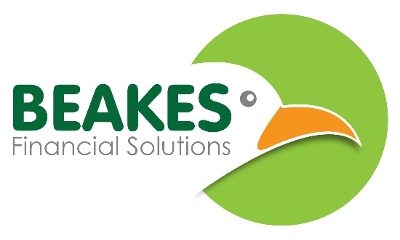Did you know there are normally over 3,500 mortgage products to choose from?
Why use a Broker?
Brokers and intermediaries are the same thing Both must be qualified with the basic qualifications such as CeMAP 1,2 and 3.
To advise on Equity Release CeRER is required.
Karen has both qualifications!
If you use a whole of market broker, like us, they have access to a huge amount of lender, many of whom you will never have heard of.
Some lenders only deal with intermediaries. This means a broker will have access to products you have no access to. Many lenders offer exclusive products to intermediaries at a lower rate than if you were to do direct to the lender. All lenders have criteria, a lot of complicated criteria. The more criteria you have (and it may be quite straight forward rather than complicated) the more time it will take you to find the best rate, or even a lender who will consider your application.
Whole-of-market brokers have access to a wide range of lenders and products that may not be readily available to individuals directly. We typically have established relationships with the lenders, including those that only work with intermediaries. As a result, they can provide borrowers with access to exclusive products and potentially better rates than if they were to approach lenders directly.
Lenders often have specific criteria that borrowers need to meet in order to qualify for their products. These criteria can vary significantly, and navigating through them can be time-consuming and complex for individuals. By working with a whole-of-market broker, you can leverage their expertise in understanding lender criteria and finding the best rate or lender who will consider your application. This saves you time and effort in researching and comparing multiple lenders on your own.
In summary, whole-of-market brokers offer a valuable service by providing access to a wide range of lenders, including exclusive products and potentially better rates. We also assist in navigating the lenders’ criteria, helping you find the most suitable options for your specific circumstances, saving you time, money and stress.

First Time Buyers
The definition of a first-time buyer can vary among lenders, and some may still consider you a first-time buyer even if you’re applying for a mortgage jointly with someone who has previously owned a property. However, not all lenders will classify such an application as first-time buyer status. Most classify a first time buyer as a person who has never owned a property before.
Lenders often provide different rates and incentives to first-time homebuyers to encourage homeownership and attract new customers. These benefits may include lower interest rates, reduced fees, or specialised mortgage products tailored to the needs of first-time buyers. This is because first-time buyers typically represent a significant market segment, and lenders want to make homeownership more accessible to them.
However, it’s also true that some lenders may view first-time buyers as higher-risk borrowers due to their lack of experience in property ownership. As a result, some lenders may have stricter eligibility criteria or charge slightly higher interest rates to mitigate this perceived risk.
‘Your home may be repossessed if you do not keep up with the payments on your mortgage’
Government Mortgage Schemes
Shared Ownership
Shared Ownership is a popular mortgage scheme that allows individuals to purchase a portion of a property while paying rent on the remaining share. It is designed to assist people who do not have a full deposit or can’t afford the full cost of a property. Shared Ownership is typically available for both new builds and existing flats and houses and is not just for first time buyers.
Under the Shared Ownership scheme, a buyer can usually acquire between 25% and 75% of the property, depending on their affordability and eligibility criteria set by the specific scheme. The remaining percentage is owned by a housing association or another landlord, who will charge rent on that portion. The rent is generally capped at 3% of the value of the share that the landlord owns.
Over time, Shared Ownership allows individuals to gradually increase their ownership share through a process called staircasing. Staircasing enables homeowners to buy additional shares in the property, usually in increments, until they eventually own 100% of the property. The price at which the additional shares are bought will be based on the current market value of the property.
It’s important to note that the availability and specific details of Shared Ownership schemes may vary depending on the country and region. It is advisable to consult with a local housing agency or financial institution to get accurate and up-to-date information about Shared Ownership opportunities in your area.
First Homes
First Homes is a scheme designed to help first-time buyers, key workers, and local residents in purchasing their homes at a reduced price. To be eligible for the scheme, applicants must be over the age of 18.
The total household income of the applicants must be below £80,000, except for those residing in the London area, where the threshold is £90,000. This income limit ensures that the scheme targets individuals and families who may find it challenging to enter the property market without assistance.
Under the First Homes scheme, participants have the opportunity to purchase either new or existing properties at a discounted price. The discount is typically between 30% and 50% off the market value of the property. However, after the discount has been applied, the property price must not exceed £250,000 outside London or £420,000 within London.
The scheme aims to provide affordable housing options for those who meet the criteria, allowing them to enter the property market at a more affordable price point. It offers an opportunity for eligible individuals and families to secure a home that might otherwise be out of their financial reach.
Right to Buy
Under the Right to Buy scheme, council tenants who have been living in their council home for a certain period of time (usually at least three years) may have the right to buy the property at a discounted price. The discount amount is determined based on factors such as the length of the tenancy, the value of the property, and the location.
The maximum discount amount varies depending on the region; up to £96,010 discount across England, up to £127,940 in the London boroughs. Typically, the discount can be used as a deposit towards the purchase of the property, reducing the amount of personal contribution required from the tenant. However, it’s worth noting that while some lenders may accept the discount as a deposit, others may have different policies and requirements.
Right to Acquire
The Right to Acquire scheme is a government initiative that allows eligible tenants of public sector housing to purchase their rented property at a discounted price. To be eligible for the scheme, tenants must have been renting from a public sector landlord, such as a housing association, council, armed service, NHS trust, or foundation trust, for at least three years.
Eligible tenants receive a discount on the value of the property they wish to purchase. The discount amount can vary depending on the location of the property but generally falls within the range of £9,000 to £16,000. It’s important to note that these figures are subject to change, and it’s advisable to check the most up-to-date information from the official government sources or contact the relevant housing authority for accurate and specific details regarding the discount amounts in a particular area.
The scheme aims to provide tenants with the opportunity to become homeowners and secure their future housing. However, it’s important to consult with the appropriate housing authority to establish other requirements or conditions associated with the Right to Acquire scheme.
Forces Help to Buy
Forces Help to Buy allows eligible personnel in the Army, Navy, Royal Air Force and Marines borrow up to 50% of their salary, capped at a maximum of £25,000, interest-free, to assist in the purchase of a property. Please check with the Ministry of Defence (MOD) or relevant authority to get the most up to date information of their criteria.
Assisted Mortgages
Joint Borrower Sole Proprietor
JBSP mortgages, also known as Joint Borrower Sole Proprietor mortgages, are a type of mortgage arrangement where multiple people can be included as borrowers on the mortgage, but only one person is listed as the sole proprietor or owner of the property.
These mortgages are often used by those who have a low income or struggle with affordability, as the income of all applicants is taken into consideration when determining mortgage affordability. This can increase the chances of obtaining a mortgage or borrowing a larger amount.
However, it’s important to note that while all applicants are jointly responsible for the monthly mortgage payments, only the person named as the sole proprietor has legal ownership rights to the property. This means that if one or more of the joint borrowers fail to make their payments, all parties will still be held accountable for the mortgage and could face financial and legal consequences.
Therefore, it is crucial to enter into a JBSP mortgage with caution and carefully consider the financial responsibility and implications for all parties involved. It’s advisable to seek professional advice to fully understand the terms and potential risks associated with this type of mortgage.
Family Assist
A Family Assist mortgage is when a family member deposits some of their savings into a savings account with the lender for a predetermined period of time, typically until certain conditions are met, such as paying the mortgage on time and maintaining the property as agreed. If the conditions are met the savings are returned to the family member at the end of the agreed-upon period.

Home Owners
Remortgage
Remortgaging involves switching your mortgage from one lender to another. Often the new lender will provide a valuation and legal advice free of charge, however, you may have to pay an early repayment charge to your existing lender if you remortgage.
The main reasons you may want to consider a remortgage are:
- Securing a better rate of interest and reducing your monthly repayments
- Your credit rating has improved
- Change of mortgage term
- Change of repayment type, for example, from an interest only to a repayment mortgage or vice versa
- Change from a residential mortgage to a buy to let mortgage
- Moving home
- Additional borrowing
- Home improvements
- Debt consolidation
- Raising money for family – ‘Bank of Mum and Dad’
- Purchasing an additional property
- Holidays
- New car
- Wedding
- Buying a joint owner out of the property
Moving Home (Porting)
Porting a mortgage refers to the process of transferring an existing mortgage from one property to another when you sell your home to purchase another. It allows you to keep the same mortgage terms, interest rate and remaining balance without having to pay any penalties or fees associated with breaking the mortgage contract.
When you port a mortgage, the lender essentially approves the transfer of the existing mortgage to the new property. It can be advantageous if you have a favourable interest rate and also saves you the costs of any fees associated with a new mortgage.
It is important to note the porting a mortgage will be subject to certain terms and eligibility criteria set by the lender which is something we can help you with.

Product Transfer
A product transfer is the process of switching one mortgage product to another with the same lender. Borrowers have the option of arranging a product transfer with some lenders up to six months before your current product expires.
Although you are able to do this online yourself, known as execution only, the new product you choose may not necessarily be the most suitable as no formal advice has been provided. Consulting with a whole of market broker, such as Beakes Financial Solutions, can provide additional benefits in terms of finding the most suitable products and exploring options with different lenders.
Second Charge
A second charge is a secondary form of legal charge which is placed on a property as a form of security.
A first charge is typically held by the primary lender who has the first claim on the property’s proceeds if it is sold to repay the debt. As lender of the second charge is paid after the first charge, interest rates tend to be higher due to the risk.
Second charges are commonly used in situations where additional funds
Buy To Let
A buy to let mortgage is a type of mortgage specifically designed for individuals, or limited companies, who want to purchase a property with the intention of renting it out to tenants.

Some key points to note are:
- Affordability: Lenders predominantly look at the amount of rental income when looking at affordability, although they can also access personal income to ensure you can afford the mortgage repayments should the property be unoccupied for a period of time.
- Deposit: A larger deposit is normally required compared to a residential mortgage. There are a handful of lenders who will consider a 15% deposit, however, the majority of lenders require at least 25% of the purchase price.
- Interest rates: Buy to let mortgages usually have a higher interest rate compared to a residential mortgage as they are perceived a higher risk. The rates can be fixed for variable and most products are normally for 2 or 5 years.
- Tax considerations: Owning a rental property comes with tax implications. Rental income is subject to income tax as well as other taxes and regulations relating to being a landlord. There is often additional stamp duty to pay as well. It is really important to consult with a tax professional to understand your tax obligations.
- Personal name or limited company: Due to the tax implications detailed above, it is important to decide before applying for the mortgage whether it is going to be put in your own name or under a limited company name.
- Portfolio lending: Most lenders will classify 4 or more rental properties as a portfolio. Portfolio lending tends to have slightly different criteria and they often look at the portfolio as a whole.
Buy to let mortgages can be quite complex and many lenders will only deal with brokers, like Beakes Financial Solutions.
Holiday let mortgages are similar to buy to let mortgages, however, affordability and general criteria vary. As many lenders do not have an appetite for holiday lets, a whole of market broker will save you a huge amount to time in doing the ground work for you.
The Financial Conduct Authority does not regulate some aspects of buy to let mortgages. Your home or property may be repossessed if you do not keep up with the repayments on your mortgage.

